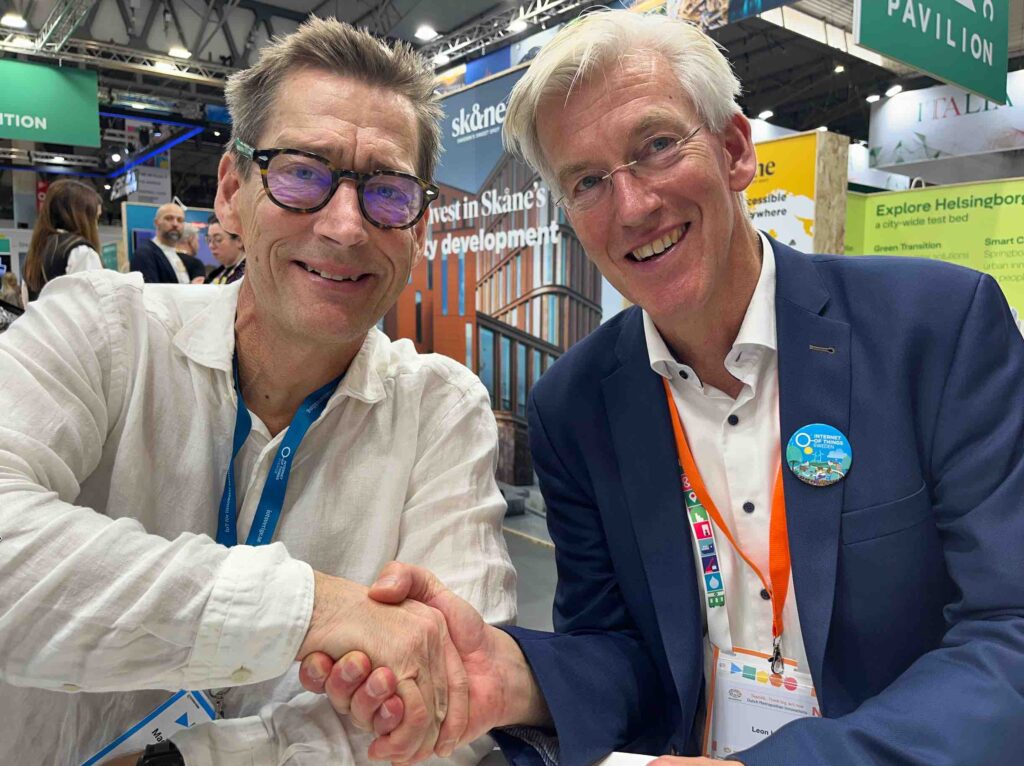The funeral of pilot projects
Magnus Fransson, IoT Sweden and Leon Hendriks, AeroVision, writes about why pilot projects in the public sector seldom scales and turn into successful implementation. IoT Sweden and AeroVision held a Workshop together at Business Day in Barcelona, arranged by Cleantech Scandinavia.
Under the somewhat provocative workshop title “the funeral of pilot projects” we gathered a very representative and engaged audience mainly from Nordics and the Netherlands. We wanted to discuss and identify obstacles why pilot projects in the public sector seldom scales and turn into successful implementation and rollout across the public users. The background is the need for innovation in order to further streamline the public sector to keep up with the growing demand (elderly population, climate challenges, crowded cities etcetera), without raising taxes and fees. Pilot project driving innovation is a commonly used tool and vehicle for this streamlining.

Success and scaling are also important to draw attention from entrepreneurs and investors complementing the public actors and their scarce resources. Entrepreneurs and investors are quick movers and tend to cluster, like omnivores and shoals of herring, close to where the market opportunity is. The overall prospect looks promising though. In Europe, public spending is 40-50 % of GDP, half the economy, so why this under performance? And can we do something about it?
Technology is not the challenge
First of all, there was a very clear consensus among the workshop audience that technology is not the challenge. Technology such as IoT, AI, automation and biotech, holds promises to unlock untapped potential, and even though technology in some cases are early stage, already a lot can be done.
Instead, we identified three major obstacles, and the consensus among the discussion groups were almost unanimously.
1. Engagement of the problem owner
2. Risk appetite in the public sector
3. Implementation affecting processes and organization (adoption)
In a way these three identified obstacles can be summarized in culture. The private innovation arena, with its people, competencies, processes and capital has evolved from a rather immature venture scene and innovation culture late 90-ies, in the first wave of the IT boom, to foster worldwide recognized scale ups from both the Netherlands and the Nordics.
The public sector seems not to have kept up with their counterparts from the private venture scene even though efforts have been made. The public sector needs to continue its efforts and to go from innovation system to innovation culture. People/leadership not manuals and steering documents rule. It’s a journey well worth the effort.

Learn from each other to overcome the challenges
This workshop kickstarted a new initiative to benchmark practices of implantation of innovation: what to learn from each other and how to overcome the challenges. IoT Sweden and AeroVision pick up this task to bring cities and stakeholders together in a European City Benchmark ‘how to create life after a pliot project’. This journey will continue in a European City Benchmark ‘how to create life after a pliot project’.
Join us and connect!
Barcelona, November 5th 2024
